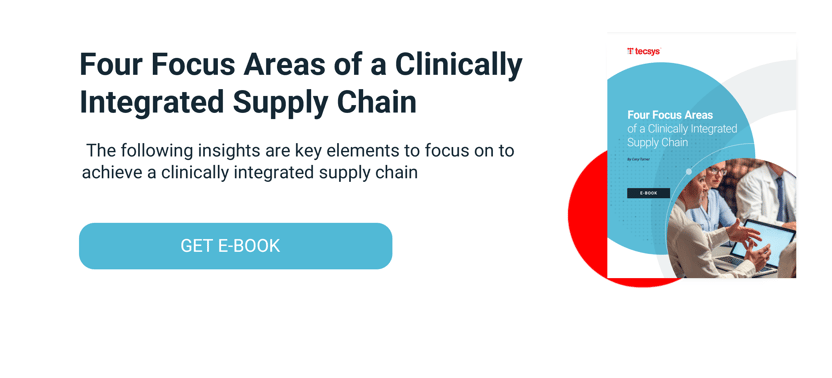Where Are You on Your Supply Chain Maturity Journey?

You may have seen various supply chain maturity models published over the years that assign health systems and hospitals to points on the maturity curve based on their capabilities. But have you stopped recently to evaluate the state of your organization?
As the industry takes steps toward automation of processes and digitization of data, it’s likely time for your healthcare supply chain team to take a step back, assess how far it has come and what steps it can take toward advancement.
When it comes to the capabilities and limitations of enterprise resource planning (ERP) systems, a supply chain management (SCM) system fills the gaps to enable electronic and automated enterprise-wide inventory visibility and control.
This evolution from transactional to strategic processes, disjointed to integrated systems, and reactive to proactive decision-making can be seen in the Strategic Marketplace Initiative’s (SMI) three stages of supply chain maturity.
Operational Is Basic
The technology infrastructure at this stage facilitates an operational supply chain, one that essentially “keeps the lights on” by supporting the basic functions of a supply chain program.
Use of technologies is mainly transactional, such as creating and sending purchase orders (PO) and limited inventory management. Because the scope of systems and processes is so narrow, supply chain leaders typically control less than 50% of their health system or hospital’s total supply spend.
At this operational supply chain maturity level, the organization’s approach to supply chain decision-making is reactive and based on historical data. Electronic data sharing is extremely limited and supply chain technology platforms (e.g., ERP) have little integration with other systems in the organization (e.g., clinical, finance).
Let’s Get Strategic
Health systems and hospitals at the strategic supply chain maturity stage have typically invested more in their supply chain systems to move beyond transactional processing. Their control over supplies is greater, representing up to 70% of total spend.
Through a higher level of system integration (e.g., ERP, EHR) and electronic data interchange (EDI) capabilities for procure-to-pay transactions, the organization begins to produce strategic data and analytics to help guide forward-looking decisions.
The supply chain is likely managing perpetual inventories with some level of automation (e.g., barcoding), but this too is limited. The organization may also have opened a warehouse or consolidated service center (CSC), but is managing it through disconnected, bolt-on systems that fail to provide visibility once a product leaves these storage areas.
Fully Optimized Is the Goal
The level of supply chain maturity at the optimization stage represents the greatest level of investment in technology. Healthcare organizations who have reached this level have maximized system integration (e.g., SCM, ERP, EHR) and control more than 70% of total supply spend.
Using advanced automation technologies (e.g., RFID), the supply chain can track supplies from receipt through to the point of use (POU) and capture item level details (e.g., lot and serial numbers, expiry dates). The supply chain has visibility into and control over not just low-cost medical/surgical supplies, but ALL supplies used in clinical care, including costly consignment/trunk stock, pharmaceuticals, and bone and tissue products. This is a critical step for effective recall management and adverse event reporting.
The organization can seamlessly share data across systems (e.g., supply chain, clinical, financial) to support real-time decision-making with advanced analytics. This is the foundation for a clinically integrated supply chain that manages cost, quality and outcomes for improved clinical and financial performance. It also facilitates proactive supply chain strategies, such as forecasting and demand planning.
Ready to Take Your Supply Chain Maturity to the Next Level?
It’s crucial that your supply chain maturity curve grows over time with the adoption of new strategies and processes. But for your supply chain to reach its full potential, your journey needs to follow a path that will take you from operational to strategic to optimized.
Evolving your supply chain performance can greatly affect the network as a whole. The importance of understanding your pain points and identifying growth opportunities is essential to modernize and develop your supply chain maturity curve. Take your supply chain to the next level by adding value that improves the entire organization.




